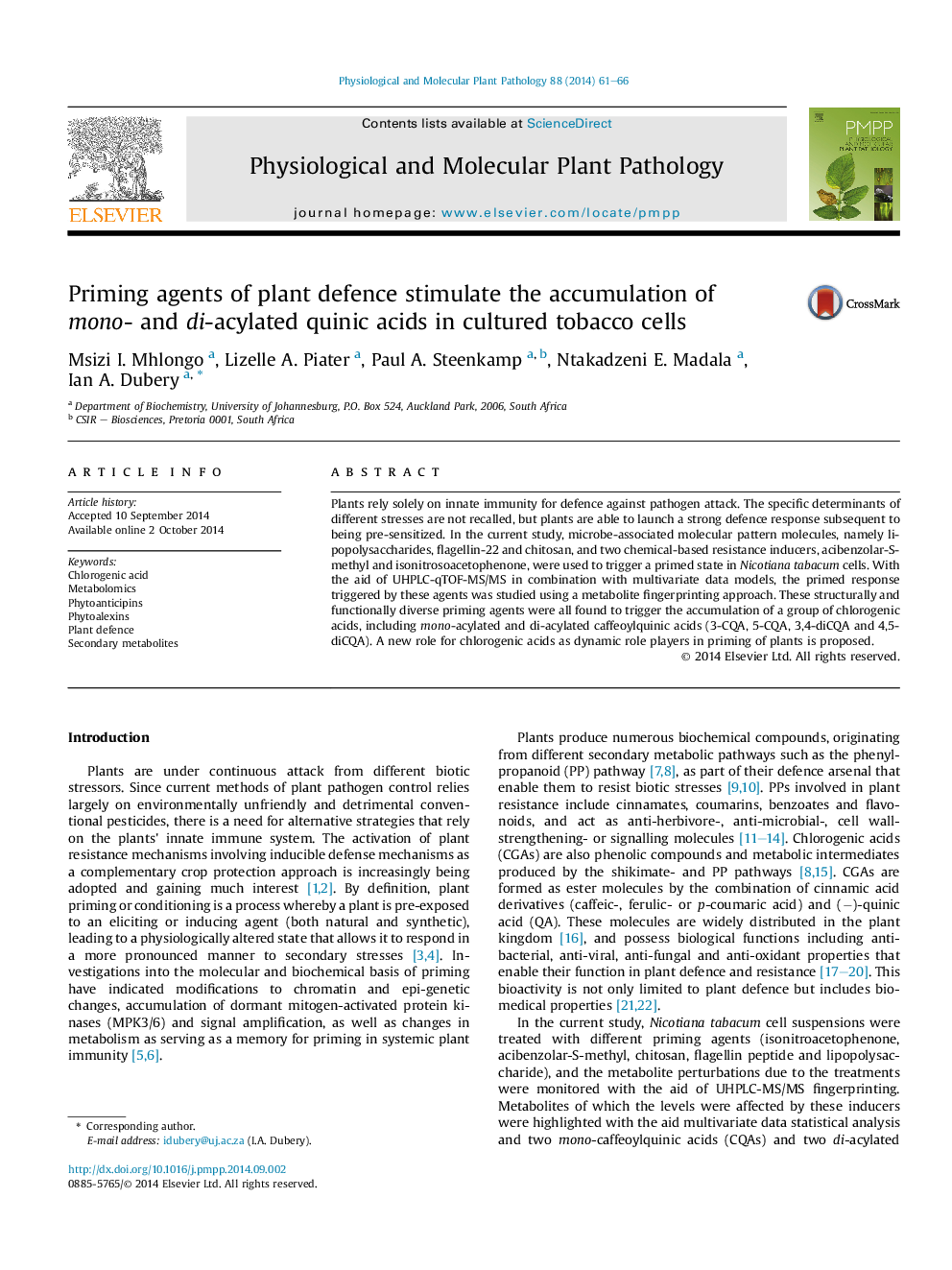| Article ID | Journal | Published Year | Pages | File Type |
|---|---|---|---|---|
| 2836303 | Physiological and Molecular Plant Pathology | 2014 | 6 Pages |
•Tobacco cells were primed for defence with MAMPs and chemical inducers.•Metabolite fingerprinting identified chlorogenic acids in primed cells.•Chlorogenic acids included mono- and di-acylated caffeoylquinic acids.•Chlorogenic acids may act as phytoanticipins as well as phytoalexin precursors.
Plants rely solely on innate immunity for defence against pathogen attack. The specific determinants of different stresses are not recalled, but plants are able to launch a strong defence response subsequent to being pre-sensitized. In the current study, microbe-associated molecular pattern molecules, namely lipopolysaccharides, flagellin-22 and chitosan, and two chemical-based resistance inducers, acibenzolar-S-methyl and isonitrosoacetophenone, were used to trigger a primed state in Nicotiana tabacum cells. With the aid of UHPLC-qTOF-MS/MS in combination with multivariate data models, the primed response triggered by these agents was studied using a metabolite fingerprinting approach. These structurally and functionally diverse priming agents were all found to trigger the accumulation of a group of chlorogenic acids, including mono-acylated and di-acylated caffeoylquinic acids (3-CQA, 5-CQA, 3,4-diCQA and 4,5-diCQA). A new role for chlorogenic acids as dynamic role players in priming of plants is proposed.
